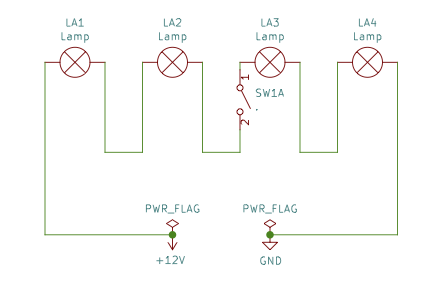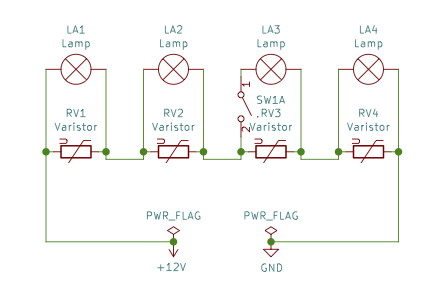How light chains work
Every year, on Christmas I ask myself the same question:
How does a light chain work? Why is it possible to blow a single light, but the others still work?
Obviously they are connected in a row. I had the basic understanding that a light chain looks like this:

This is how I thought a light chain would work…
If you would open SW1A as depicted (= lamp is broken),
all lamps would turn off, because the circuit is interrupted.
Investigating further — The first hint you get: If you manually plug out one lamp, the whole chain stops working. In conclusion - there must be something inside (or near) the single light bulbs.
Let’s take a closer look:

Taking a closer look..
In the bottom of the bulb please note the little thing connecting the wires
(right above the glass knob). It turns out this is a so called
varistor.
It is also called a voltage-dependent resistor
- Something I’ve
never heard of before…
Think of it like something between a valve or a fuse: At low voltage it has a high electrical resistance, at high voltage the resistance gets lower.
So we have to correct the diagram to look like this:

This is how it really works…
Because the lamp and the varistor are set in parallel, they divide the voltage in two halves. The moment one bulb gets broken, the full voltage ends up at the varistor. The varistor then drops his resistance and let’s the current flow through itself… As a result the circuit is still intact, and someone can quickly see which bulb has to be replaced. Genius!
I learned something new today, and I hope you did too.
Merry Christmas!